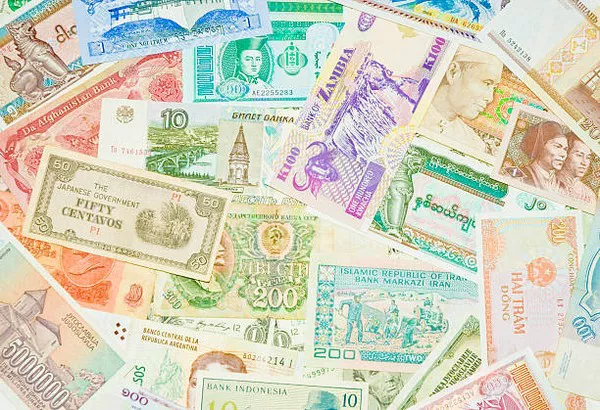In the intricate dance of global currencies, the Argentine black market peso emerges as a distinctive player, navigating the complex terrain of economic fluctuations, government policies, and the resilience of a nation’s financial ecosystem. This comprehensive exploration aims to unravel the layers surrounding the Argentine black market peso, providing insights into its origins, implications, and the broader economic context that shapes its existence.
Historical Context:
Understanding the Argentine black market peso requires delving into the historical context of Argentina’s economic journey. The nation has grappled with periods of economic instability, hyperinflation, and currency devaluation, creating an environment where alternative currency markets, including the black market peso, have found a foothold.
Hyperinflation Episodes: Argentina has faced notable episodes of hyperinflation, particularly in the late 20th century. The erosion of the value of the official currency, the peso, prompted the emergence of alternative markets seeking stability and value retention.
Currency Devaluation: The Argentine peso has experienced significant devaluation over the years, impacting its purchasing power and eroding confidence in the official exchange rates. In response, individuals and businesses turned to alternative markets to secure better value for their transactions.
Origins of the Black Market Peso:
The origins of the black market peso can be traced to the dynamics of currency control measures, capital restrictions, and the pursuit of more favorable exchange rates. Various factors contribute to the emergence and sustenance of this parallel currency market.
Currency Controls: Government-imposed currency controls, intended to manage capital flight and stabilize the official exchange rate, inadvertently create opportunities for alternative markets to thrive. Restrictions on the purchase of foreign currency drive individuals and businesses to seek alternative channels.
Parallel Exchange Rates: Discrepancies between the official exchange rate and the actual market value of the peso create a fertile ground for the black market peso. Individuals and businesses engaging in cross-border transactions often find more favorable rates in the informal market.
Implications for the Economy:
The existence of the black market peso carries significant implications for Argentina’s economic landscape, influencing factors such as inflation, foreign exchange reserves, and the effectiveness of monetary policies.
Inflationary Pressures: The coexistence of a parallel currency market can contribute to inflationary pressures, as the discrepancy between official and black market exchange rates influences pricing dynamics. This poses challenges for the government in managing inflation expectations.
Foreign Exchange Reserves: The drain on foreign exchange reserves is a concern when a substantial portion of transactions occurs outside the official channels. This can impact the country’s ability to meet international financial obligations and stabilize its external accounts.
Government Responses and Policies:
Governments in Argentina have grappled with the challenges posed by the black market peso, implementing various policies and measures to address its implications. These responses often reflect the delicate balance between economic stability and the need to curb illicit financial activities.
Currency Devaluation: At times, governments resort to official devaluation of the peso as a response to economic challenges. While this may address some issues, it can also contribute to a widening gap between official and black market exchange rates, further fueling the informal market.
Crackdowns on Informal Markets: Authorities have, at different junctures, attempted to crack down on the black market peso by implementing stricter regulations and surveillance. However, the persistent demand for alternative currency channels often complicates efforts to fully suppress informal markets.
Social and Economic Dynamics:
Beyond its economic ramifications, the black market peso is intertwined with the social and economic dynamics of Argentina, influencing individual behaviors, business strategies, and public perceptions.
Consumer Behavior: Individuals often navigate between official and black market channels based on convenience, accessibility, and perceived value. The prevalence of the black market peso shapes consumer behaviors and choices in the realm of currency transactions.
Business Strategies: Businesses, especially those engaged in international trade, develop strategies to optimize currency transactions. The existence of alternative markets prompts businesses to explore avenues that offer better exchange rates and liquidity.
International Trade and Investment:
The impact of the black market peso extends beyond domestic boundaries, affecting Argentina’s international trade relationships and foreign investment climate.
Trade Competitiveness: Discrepancies in exchange rates can influence the competitiveness of Argentine goods and services in the global market. Businesses may benefit or face challenges depending on the prevailing exchange rate dynamics.
Foreign Investment Perception: The presence of a vibrant black market peso can influence the perception of foreign investors. While some investors may navigate alternative markets for financial transactions, others may view currency instability as a potential risk to investment.
See Also: Argentine Peso (ARS) Currency: History, Symbol, Codes & Denominations
Conclusion:
In the intricate dance of the Argentine economy, the black market peso emerges as a nuanced character, shaped by historical forces, economic policies, and the resilience of a nation in flux. This comprehensive exploration has sought to unravel the layers surrounding this parallel currency market, shedding light on its origins, implications, and the dynamic interplay with Argentina’s broader economic landscape. As the nation navigates the complexities of the global financial stage, the fate of the black market peso remains intertwined with the choices, reforms, and economic narratives that shape Argentina’s future.


